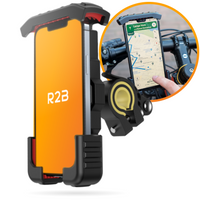No Products in the Cart
If you are planning to go on holiday with a roof box on your car, there are a few things you should pay attention to in order to get to your destination safely and without any problems. In this article, as an expert in the field of roof boxes, I will provide tips and advice for someone who has never been on holiday with a roof box.
With the help of these 5 tips you can safely hit the road with a roof box. Whether you are going on a skiing holiday or traveling with a tent in your roof box, the following tips will ensure that you arrive at your destination safely and in one piece.
Proper attachment of the roof box to your car is essential. This not only ensures that the roof box remains safely on your car, but also that you arrive at your destination without any problems. Before you start mounting, it is important to read the manual for both the roof box and the car carefully. This way you know exactly what to pay attention to and prevent mistakes. In addition, make sure that you use the correct mounting materials and that they are properly secured. A useful tip is to test the mounting a day in advance, so that you can be sure that everything is properly secured.
It is important to know the maximum permitted weight of both the roof box and the car. Overloading can lead to dangerous situations, such as loss of control of the car and damage to the roof box. When determining the load of the roof box, also take into account that the weight is not placed too far to the rear. This can affect the handling of the car. Therefore, weigh all the items you want to take with you and divide them evenly between the car and the roof box.
A roof box on your car provides extra wind resistance. This can lead to higher fuel consumption and reduced driving performance. It is therefore important to take this into account when planning your route and determining the speed at which you drive. In addition, keep in mind that strong gusts of wind can affect the car. Adjust your speed accordingly and keep sufficient distance from other vehicles.
A roof box on your car can increase the height of the car. This may mean that you can no longer drive under low bridges or in parking garages. Therefore, always check the height restrictions before you set off. In addition, make sure that you take the height of the roof box into account when parking the car.
Good load distribution is important for a stable car and better driving performance. Heavy items should be placed at the bottom of the roof box and light items at the top. This keeps the car more stable on the road and prevents the car from swaying or leaning over. It is therefore advisable to think carefully about the distribution of the luggage when packing the roof box.
With these tips you are well prepared for a holiday with a roof box on your car. Always take into account the safety and laws and regulations of the country you are going to.
The speed limits for cars with a roof box are the same as for cars without a roof box. However, it is important to take into account the extra wind resistance and the changed center of gravity of the car. This can make the car less stable at higher speeds, especially in crosswinds. As a rule of thumb you should not drive faster than 130 km/h with a roof box on the roof. However, always check the maximum speed recommended by the roof box and car manufacturer. It is always better to play it safe and not drive too fast, especially when driving on unfamiliar terrain.
A roof box increases the air resistance of the car, which means that more fuel is needed to cover the same distance compared to a car without a roof box. The exact additional fuel consumption depends on several factors, such as the size and shape of the roof box, the speed at which you drive, the driving conditions and the weight of the roof box and the load. In general it is estimated that the additional fuel consumption can vary from 5% to 20% at speeds above 100 km/h. At lower speeds the additional fuel consumption will be lower. It is therefore important to take the extra fuel consumption into account when planning your route and determining the speed at which you drive.
